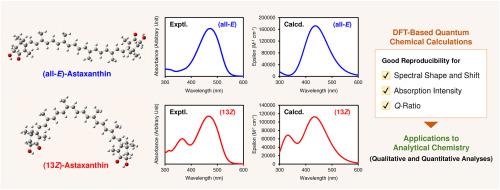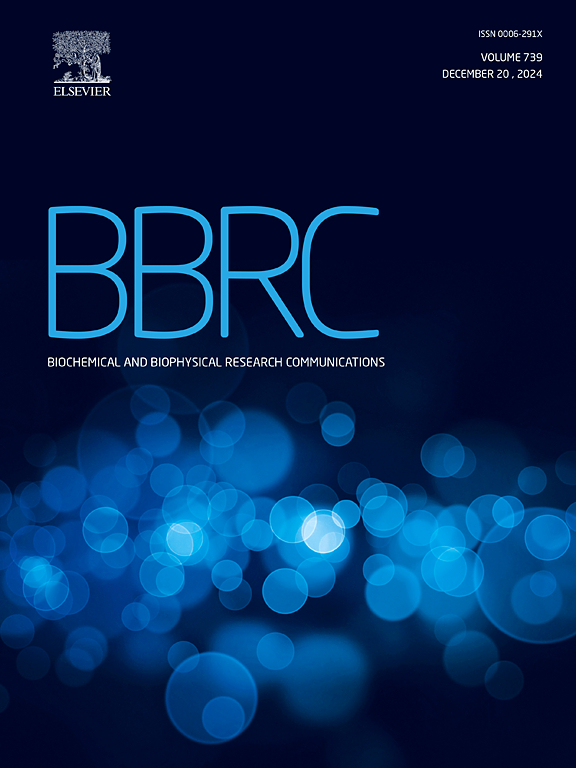利用基于 DFT 的量子化学计算完善类胡萝卜素几何异构体分析的可能性。
IF 2.5
3区 生物学
Q3 BIOCHEMISTRY & MOLECULAR BIOLOGY
Biochemical and biophysical research communications
Pub Date : 2024-10-19
DOI:10.1016/j.bbrc.2024.150858
引用次数: 0
摘要
我们基于密度泛函理论(DFT)对三种重要的类胡萝卜素(番茄红素、β-胡萝卜素和虾青素)的全 E 异构体和几种 Z 异构体进行了量子化学计算,从理论上获得了每种类胡萝卜素异构体的紫外可见光谱、响应因子(根据全 E 异构体和 Z 异构体的吸收强度确定)和 Q 比率。计算出的光谱很好地再现了实验光谱的形状(例如,Z-峰的出现和 Z-异构体主峰的蓝移)。计算得出的响应因子和 Q 比率与报告值也非常吻合。值得注意的是,难以通过实验确定的响应因子也得到了很好的再现。这些结果表明,量子化学计算可以作为一种有效的工具,用于完善定量分析,并获得难以获得标准的类胡萝卜素的光谱数据。本文章由计算机程序翻译,如有差异,请以英文原文为准。

Possibility of refining carotenoid geometrical isomer analysis utilizing DFT-based quantum chemical calculations
We performed quantum chemical calculations based on the density functional theory (DFT) for the all-E- and several Z-isomers of three commercially important carotenoids (lycopene, β-carotene, and astaxanthin) and theoretically obtained the UV–Vis spectrum, response factor (determined from absorption intensities of the all-E- and the Z-isomers), and Q-ratio for each carotenoid isomer. The calculated spectra reproduced the experimental spectral shapes (e.g., the appearance of the Z-peaks and the blue shift of the main peaks for the Z-isomers) very well. The calculated response factors and Q-ratios also showed good agreement with reported values. Notably, response factors, which are difficult to determine experimentally, were well reproduced. These results suggest that quantum chemical calculations can be an effective tool for refining quantitative analysis and obtaining spectral data for carotenoids for which standards are difficult to obtain.
求助全文
通过发布文献求助,成功后即可免费获取论文全文。
去求助
来源期刊
CiteScore
6.10
自引率
0.00%
发文量
1400
审稿时长
14 days
期刊介绍:
Biochemical and Biophysical Research Communications is the premier international journal devoted to the very rapid dissemination of timely and significant experimental results in diverse fields of biological research. The development of the "Breakthroughs and Views" section brings the minireview format to the journal, and issues often contain collections of special interest manuscripts. BBRC is published weekly (52 issues/year).Research Areas now include: Biochemistry; biophysics; cell biology; developmental biology; immunology
; molecular biology; neurobiology; plant biology and proteomics

 求助内容:
求助内容: 应助结果提醒方式:
应助结果提醒方式:


